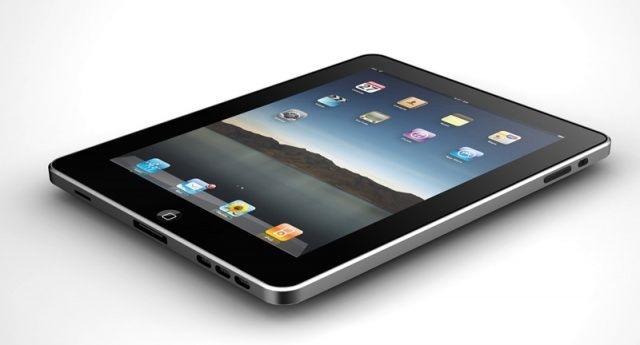It’s beginning to look a lot like an iPad Mini Christmas. Credible reports say over-worked factory employees in China are already churning out small iTablets in large iQuantities, and that Apple will summon fawning journalists Wednesday to participate in an October 17 iPad Mini infomercial — I mean product launch.
I predict that the iPad Mini will dominate holiday sales, take over the education market and destroy three current products on the market.
That the iPad Mini will dominate holiday sales this year is a no-brainer.
It’s the perfect gift. If rumors hold, and it’s priced at $250 or less, it will be cheap enough to be given to kids, parents, grandparents, siblings and spouses. The iPad Maxi is on the high side for a gift; the iPhone isn’t a great gift because of wireless carrier contract complications.
Ah, but the iPad Mini is a no-strings-attached, crowd-pleasing, they’re-guaranteed-to-love-it kind of holiday gift. It’s both brand new and also familiar.
Apple stores appear in some of America’s most heavily trafficked downtown and mall holiday shopping meccas. It’s the perfect early gift. It’s the perfect last-minute gift (if they don’t run out). It’s the perfect gift to buy for yourself.
So the iPad Mini will dominate holiday sales. And when the reindeer dust has settled, Hanukkah dreidels have stopped spinning and New Year’s Eve hangovers have subsided, Apple will really get serious about the iPad Mini.
I believe Apple will spend the first half of the new year on a full-court press to convince school boards, school districts, teachers and textbook publishers to embrace the iPad Mini as the all-purpose education appliance that every student needs.
By this time next year, I predict, the iPad Mini will be by far the biggest selling tablet in the world, bigger even than the regular iPad.
The iPad Mini will be great news for Apple investors, and bad news for the competition.
As I detailed in this space way back in February, there’s a gaping competitive hole in the mid-size “phablet” range. Every single non-Apple device that’s significantly profitable is a phone or tablet larger than the iPhone and smaller than the iPad.
Nothing the same size or smaller than the iPhone is making money; nothing the same size or larger than the iPad is making money.
The devices that are succeeding are doing so where Apple doesn’t dwell: giant phones and tiny tablets. But the iPad Mini will change all that.
I think Google and Android and Samsung fandom will save Samsung’s big phones and small tablets and Google Nexi.
But three devices won’t be so lucky:
1. The Amazon Kindle Fire HD
The Kindle Fire HD is a $200 tablet slightly smaller than the likely size of the iPad Mini. Kindle benefits from the marketing advantage of being advertised on Amazon’s home page. But it does not benefit from more powerful enthusiasms.
Obviously, Apple fanboys won’t buy it. And even though it runs Android, the Android and Google fanboys aren’t keen on it, either. The reason is that Amazon uses Android but cuts Google out of all the revenue. It uses Amazon’s own browser, and directs all content purchases not to Google Play, but to Amazon.
People buy Amazon Kindle Fire HDs because they’re cheap and easy to buy. But when an Apple iPad is also cheap and easy to buy, Kindle Fire HD sales will evaporate.
2. The Apple iPod Touch
The Apple iPod Touch is a cool device, taking advantage of iPhone apps. It’s tiny, thin and cheap. But let’s face it. It’s for kids. Children old enough to play iOS games but too young for a cell phone get iPod Touches.
But the cheapest iPod Touch is $200. The cheapest iPad will probably be only slightly more than that. Kids are going to demand, and get, iPad Minis instead of iPod Touches.
3. The RIM BlackBerry PlayBook
The answer to your question is: Yes, the BlackBerry PlayBook still exists.
The company claims to have sold 130,000 PlayBooks in the second quarter of 2012 (Apple sold 17 million iPads during the same time period — 130 times as many units.)
RIM has upgraded the OS recently, and emphasizes corporate security. But there’s little RIM can do to compete against the iPad Mini.
It’s apps and interface, not security, that sells tablets — even in the enterprise market.
The BlackBerry PlayBook is toast, and has zero chance against the iPad Mini.
I know, I know, you naysaying, Android-loving, contrarian cynical skeptics — how can I talk about the competitive performance of a device nobody has ever seen?
And it’s a fair point. I should know. I raved with some certainty about the gloriousness and perfection of the iPhone 4S before it shipped, only to be somewhat disappointed.
However, the overwhelming probability is that the iPad Mini will offer few surprises it will probably look and work like the current iPad.
It will probably support current iPad apps. And it will probably feature top-shelf Apple-quality fit-and-finish and high-grade materials.
And most importantly it will probably be about half the price of the current iPad.
And if it does all that, I’m predicting it will dominate holiday sales, take over the school market and crush the Amazon Kindle Fire HD, the Apple iPod Touch and the RIM BlackBerry PlayBook.




